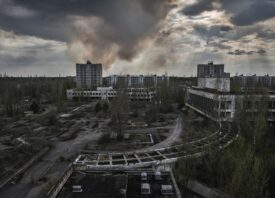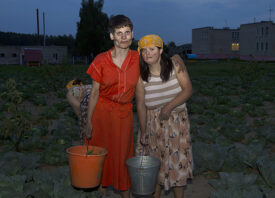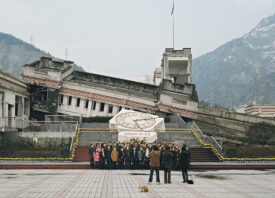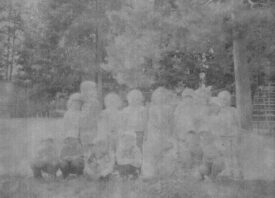Search this site
Life Inside the Chernobyl Exclusion Zone



It’s early September, 2014, and the sun is shining over a verdant landscape dotted with grazing horses. The people who live there, mostly the elderly women known affectionately as “babushkas,” travel by foot. They plant potatoes. Photographer Raul Arantes has just set foot in the Chernobyl Exclusion Zone, nearly 30 years after the nuclear disaster.
The photographer spent one week in Chernobyl, traveling to the remote areas that belong only to those known as the “samosely,” an estimated one to two hundred people who remain within the contaminated 30 kilometer radius around the power plant. With the help of a fixer to translate, was able to enter the homes that were still inhabited.
The samosely either returned to the zone after they were evacuated from their homes or refused to flee in the first place. No one can legally settle here, but these people are allowed to live out the rest of their lives in the homes they call their own.
Arantes read prior to his visit about the wariness and antipathy of the samosely towards outsiders, but he found them welcoming and open. There was indeed a sense of pride at having stayed behind; one woman told the photographer her regrets at having lost the deed to her house during the evacuation.
“Nobody will stop her from living there,” he reminds me, but she still mourned the loss of the physical document.
For the samosely, Arantes says, the disaster is a “living memory.” It colors everyday life. Most of the samosely are women; some of their husbands worked on the clean-up efforts, and many of them died. Life in the exclusion zone is lonesome, especially in winter, when the bitter cold makes even the most routine tasks difficult.
Years later, the photographer doesn’t know if the people he met are still alive. There’s no way to contact them, since the zone is so isolated. There is also no transportation for the samosely; they walk into the town to get their groceries. Arantes suspects most stayed not only because of their sense of belonging but also because they had nowhere else to go.
Close to the border with Belarus, the photographer found people living in areas that were still a part of the exclusion zone due to geography but not contaminated. Here, people had farms and seemed to be happy. They fed him a meal of salad with cabbage and tomatoes and shots of differently colored homemade vodka. They talked about politics and Putin.
When Arantes returned home, he set the work from Chernobyl aside for a while. He wasn’t sure if he ever wanted to publish the images. That was never his goal; it was something he did only for himself.
Still, Chernobyl and the people there lingered with him. What he found in these villages weren’t scenes from the apocalypse; they were stories about the slow burn of tragedy, loss, and the stamina to endure. He hopes to return again, but he doesn’t know what he’ll find. The people he met were old, and winters are tough to survive.
“It’s almost as if everything is disappearing,” the artist says. “The radiation is disappearing, but at the same time, the people are also slowly disappearing. I don’t believe there will be people living there five years from now.”
Arantes believes his memories from Chernobyl have bled into his daily life. He has more empathy and a better understanding of human suffering. He tells me, “Even if I’m walking [at home] and see someone who is in a difficult situation, I try to help, even if it’s a little gesture.”
You can follow the artist on Instagram at @rrr4ul.










